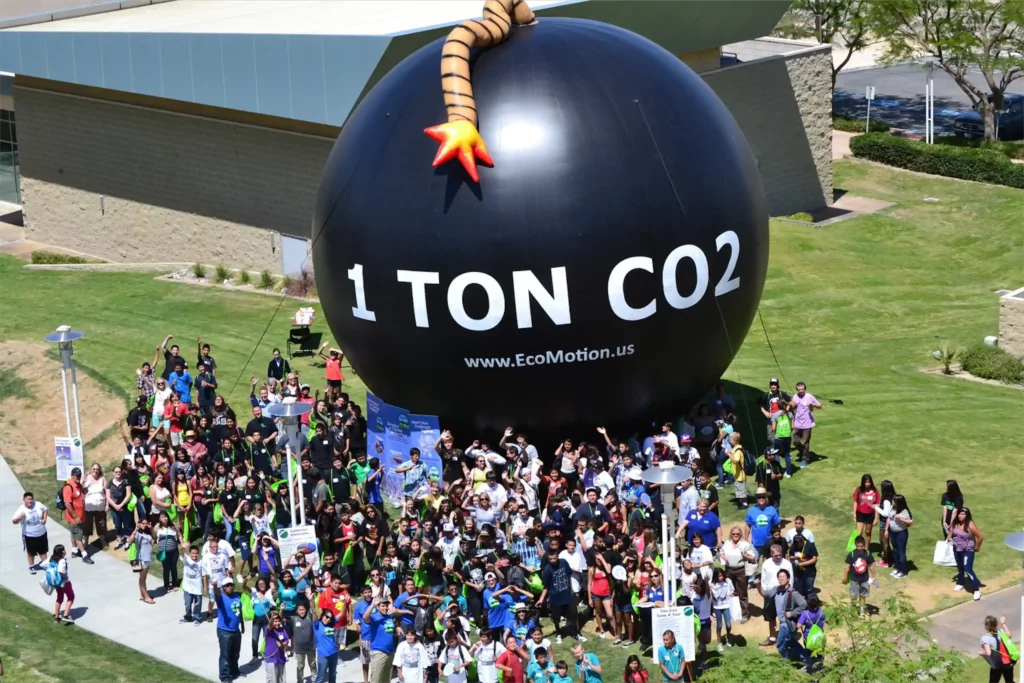
Adding 10% to your monthly electricity bill could cut your footprint by 95%, in the one-sentence version.
This post follows an introductory piece for people interesting in reducing their personal carbon footprint. In the series, we review the five categories most research uses, namely 1) residential energy use, 2) travel, 3) food, 4) goods, and 5) services. This is the first in the series – in “key points” format. We’ve also written a longer piece that walks through the mechanics.
How much energy does the average American home use? It’s roughly 28,000 kWh per year. Given that only 11% of the national energy mix comes from renewables, each kWh of energy produces almost exactly 1 pound, or 0.4483 kg of carbon dioxide equivalents (CO2e) per year. This is CO2e-per-kWh figure is known as a conversion rate, and more on that below. These numbers together work out to about 12 metric tonnes of CO2e per year per home. (A metric tonne is a little bigger than a U.S. ton, so that’s a little over 13 U.S. tons.) It might be easier to visualize the volume of a ton of CO2, which would fill a giant balloon 10 yards in diameter.

Using less – cut your kWh by 20%
The actions households can take fall into two main categories: use less, and use renewable. Using less involves more conscious energy use, as well as upgrading fixtures in the house. Heating and cooling are the biggest energy users, accounting for around half of a home’s consumption, so a smart thermostat is probably the first change to make. Lighting accounts for 5% of residential energy use, but switching from all incandescent bulbs to all LEDs would cut that power use by about 90%. U.S. houses have begun to make the switch: 29% of U.S. houses report having at least one LED, and 18% report having no incandescent bulbs at all. Homes in the U.S. have on average 45 bulbs each, so it is not an enormous task. All in, with relatively modest investment in new fixtures, perhaps 20% savings are possible.
Renewable supply – make the switch for 6.5-15% extra
The real action, unsurprisingly, comes from switching to renewable supply. Is it a hassle? No. It involves selecting a reputable energy supply company (ESCO) by doing some online research, and completing a web form. No visits from technicians required. Is it expensive? It adds around 1 to 2 cents per kWh, but bigger differences are possible with variable plans offered by some ESCOs. As an example, Abest Power and Gas charged a range of $0.18 to $0.059 per kWh in the New York market between 2018 and 2020, while the non-renewable rate offered by Con Edison (also known as ConEd) was $0.07 to $0.10 per kWh over the same period.
Most electricity bills have two parts: a “supply” part (which is done by the ESCO), and a “delivery” part (which is the local utility, and you don’t have choice here; in New York it is ConEd). The delivery part has flat fees associated with customer billing and meter reading services. Changes to the cost of the supply part end up being more modest than they might seem, because parts of the bill are fixed. In the New York City market (which, to be sure, is known for its sales taxes and expensive electricity, at around $0.24 per kWh vs a national average of around $0.12), an extra 1.5 cents a per kWh for a 100% wind supply is about 6.5% on your monthly bill. Elsewhere, it will be closer to 10%, and in some markets up to 15%.
The total carbon effect – from 13 tons to half a ton
Switching to renewable supply doesn’t completely eliminate carbon, as there is some embedded carbon in transmission, generation, and maintenance (e.g., vehicles used to keep the grid running). But the conversion rate drops from about 0.44kg CO2e to 0.02kg. So even if your consumption didn’t change at all, 28,000 kWh would produce 0.56 metric tonnes of CO2e per year, rather than 12. Lower your kWh consumption a bit, and your home would produce less half of one balloon.